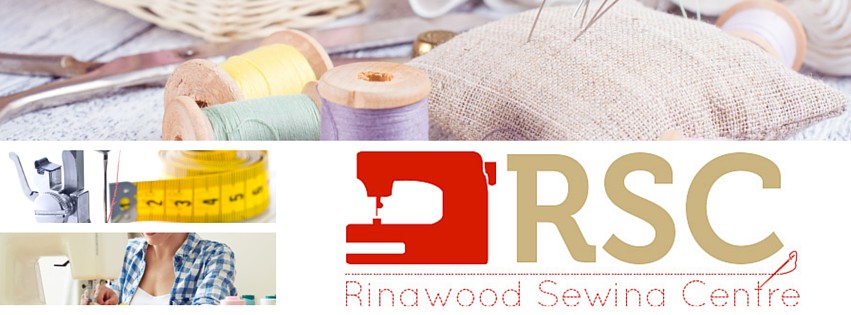The entire project was seen on the Overlocker with the Piping foot. We used both a three thread narrow overcast and a four thread overcast stitch to make our cushion covers.
If you'd like to give it a go, here's what you need:
3 x squares of fabric 2" bigger than your square cushion insert, so a 14" insert would need 16" squares of fabric.
A cushion insert
A zip at least 3" longer than your fabric
Piping - enough to go around the cushion PLUS 4"
Four cones of polyester thread
Overlocker (serger with a piping foot)
1/4" double sided tape - or clips, but all my students found the tape easier
General sewing supplies
Begin by cutting the fabric.
Remove the bottom metal stopper from the zip, use the tip of scissors, a screwdriver or pliers to do this.
Press one square of fabric in half, right sides together.
Place a strip of tape along the raw edge.
Press one side of the zip onto the tape.
Place a second strip of tape on the long edge of the zip. And stick down the other raw edge. Your zip is now enclosed in a tube of fabric.
Thread your Overlocker (serger) for a 3 thread narrow overcast, with the piping foot attached.
Beginning at the base of the zip and position so that the coils of the zip feed through the piping foot, sew.
You should be able to stitch right to the end, however if your zip is too short you will run into hherritage zip pull, which is bad. Instead stitch off the side, open the zip, and flip the work ver so you can begin from the other end to complete sewing in the zip.
Open the fabric and press with an iron.
Open the zip carefully (don't slide the zip pull off the coil) to test that your stitching hasn't caught the zip coil.
Press another square of fabric in half. Open out, and Place this square of fabric on the table, right side up.
Place the piece you just stitched. Use tape to stick the zip to another square of fabric.
Place another strip of tape onto the edge of the zip, and fold the square of fabric over the stitched piece so that the raw edge is against the tape of the zip. This will mean that the already stitched piece is inside the new tube.
Stitch this side just like you did the first one.
Cut along the fold and press.
You have finished the back of your cushion.
Trim the remaining square and the back to form a Square.
Set the back to one side.
Lay the front square of fabric on a table, right side up.
Place strips of tape around the cushion, right on the edge.
Prepare the piping by pulling out some of the cord, and trimming off about 1". Don't trim the fabric, just the cord. Trimming out the cord leaves you with about 1" of piping that is flat, and This is necessary because we will create a heat overlapped finish where the two ends meet.
Now press the piping onyo the tape, you need to remember three things,
1. Start 1/3rd of the way along the edge,
2. Begin with the flat section twisted off the end of the fabric (see pic below)
3. Only the flange of the piping should be stuck to the tape, not the corded section of the piping.
Above: notice that the two ends of the piping crisscross and overlap!
As you tape the piping into position, use a pair of sharp scissors to cut a 45 degree angle through just the flange of the piping. This will enable you to bend around the edges.
When you reach the end, remove about 1" of cording from inside the piping so that you can overlap the piping ends as shown in the pic above.
Now place more tap around the edges, so that the backing can be positioned.
Before you stick down the backing, half open the zip.
Make sure you have right sides facing.
Trim away any excess from the zip, because your Overlocker will work better if all four sides are flush.
Thread your Overlocker for 4 thread overcast.
Now stitch each of the four sides leaving 3-4 inches of chain stitch so you can finish off.
Finish off the ends by either knotting the tread ends, using a bodkin and stitching them through the Overlocker edge, or using frays top and glueing the ends to prevent them unravelling.
You are done!!

















































